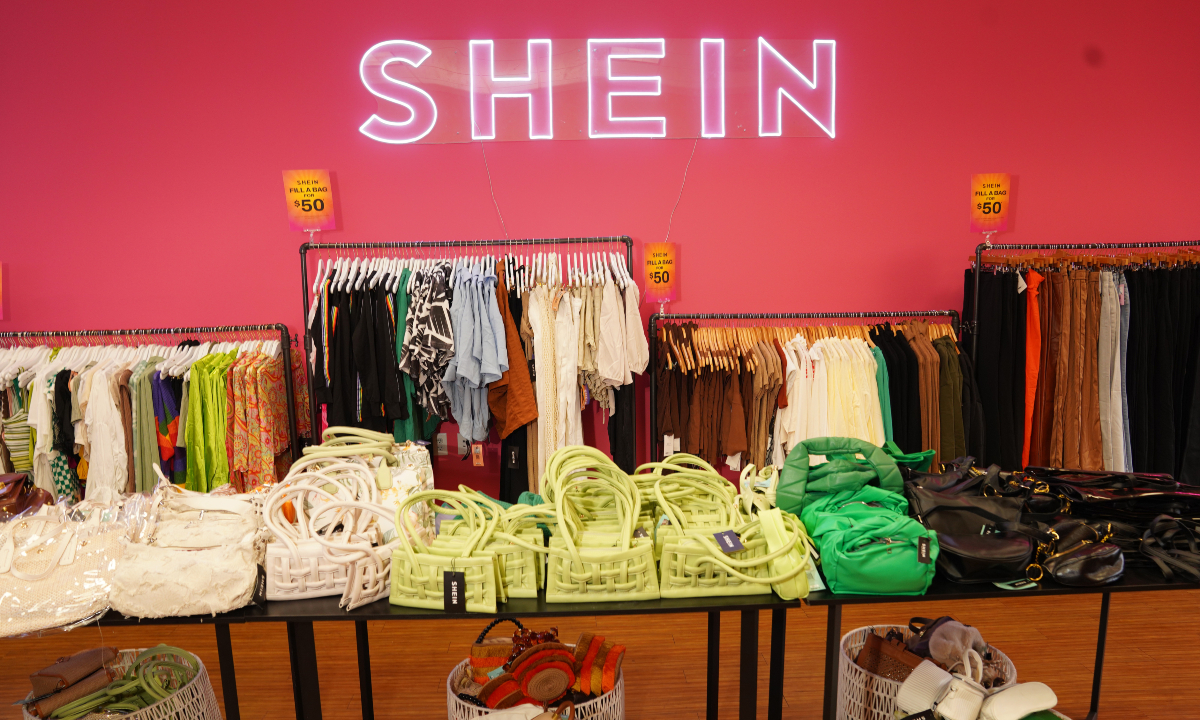On the surface, Shein seems like a game-changer in the fashion industry. The online fast fashion retail giant offers every type of clothing and style one can imagine to over 150 countries across the globe at insanely cheap prices. In less than a decade, Shein went from a Chinese apparel merchant with 100 employees to the largest fashion retailer in the world. From 2020 to 2022 alone, its value rose from $10 billion to $100 billion.
The company has poured millions into social media campaigns and advertising. You can hardly use the internet for five minutes without seeing a Shein ad boasting $10 dresses and sweaters. If you use Instagram, TikTok, or YouTube, you’ve more than likely witnessed at least one of your favorite creators trying on massive Shein hauls with #SheinPartner in the captions.
You’re probably familiar with Milton Friedman’s famous saying, “There’s no such thing as a free lunch.” This rule of economics is a reminder that everything comes with a cost. You may not be paying that cost directly, but somewhere, somehow, someone else is paying it. This seems to be the case with Shein. While consumers love a good deal, a lot of people are paying to allow this company to sell clothes at unfathomably low prices. Workers, the environment, and designers are paying the biggest price, but consumers may also be paying in health what they don’t pay in cash.
There’s a reason (or several) why Shein has become such a controversial company. Here’s what goes on behind the scenes at the fast fashion mega-retailer.
Shein’s human rights and sustainability problems
Shein’s blatant disregard for human rights and sustainability are the most concerning of the company’s many issues. The problem with Shein is that its manufacturing and production practices are not sustainable. The retailer adds at least 2,000 new items to its store per day, with some of these pieces being sold for less than $5. This means Shein needs workers who can produce a high quantity of pieces daily for a very low price. Many of these workers work in Chinese factories that are violating labor laws.
In 2021, Public Eye launched an investigation into Shein, and the working conditions it uncovered were appalling. Researchers from the organization visited a couple of Shein’s supply factories in Guangzhou, where they found employees working 75-hour weeks with hardly any pay. 12-hour work days were common, with employees typically receiving just one day off per month. When Channel 4 released a documentary, Untold: Inside the Shein Machine, the conditions observed by undercover researchers were even worse: The documentary found that 18-hour workdays were the norm, with pay as low as 4,000 yuan (equivalent to $550) for an entire month of work. These factories were also unsafe, lacking windows or emergency exits. Employees were so overworked that women would use their lunch breaks to wash their hair because it was the only chance they had to do so.
The exorbitant amount of clothing the company produces is also bad for the environment. TIME reported that the amount of CO2 Shein’s manufacturers produce is equivalent to the amount of CO2 released by a combined 180 coal-fired power plants. Shein has set a goal to reduce its emissions by 25% by 2030, but so far it hasn’t implemented any changes to achieve this. In addition, to keep production costs extremely low, Shein uses cheap polyester in its designs. Oftentimes, these clothes only suffice for one or two wears before falling apart and being tossed. Unlike other clothing textiles, polyester can take up to 200 years to decompose. Shein is not only creating clothing waste, but also contributing to overflowing landfills of polyester clothing that are difficult to decompose.
Shein’s clothing contains toxic chemicals
As mentioned above, Shein clothing is extremely cheaply made. Not only does this mean it’s hard to decompose, but the chemicals in its textiles could also be dangerous to consumers. CBC Marketplace conducted lab tests to gauge the toxins in Shein clothing. Researchers collected 38 samples of clothing, including children’s and maternity clothes, and found that one in five items had elevated levels of lead and other chemicals. Among the artifacts with elevated lead was a toddler’s jacket with 20 times the amount of lead deemed safe for children and a purse with five times the amount deemed safe for exposure.
This is particularly concerning because lead is most dangerous to children and pregnant people. Exposure to lead during pregnancy can increase the risk of miscarriages, premature birth, and birth defects. Additionally, lead exposure in children increases the risk of developmental issues, learning issues, and anemia. Shein seemingly confirmed the study’s findings by sending a statement to CBC Marketplace saying the purse and jacket were removed from its stores and the company was seeking to resolve the issue with suppliers.
As for how lead got into the clothing, Read Unwritten suggests it likely came from the use of synthetic dyes. Synthetic dyes are chemically manufactured to add color to products and have been found to contain myriad dangerous heavy metals like lead, arsenic, and chromium. If Shein is using such dyes to add vibrant color to clothing, it raises questions about the toxins also being added to clothing and the health effects these decisions could have on consumers.
Shein has a habit of stealing from artists and designers
As if treating workers inhumanely, harming the environment, and adding toxins to clothing weren’t bad enough, Shein has also been accused of stealing designs multiple times. In one bizarre case, a stylist found a dress from Shein that seemingly incorporated her actual face without permission. Earlier this year, a fitness influencer posted a blog detailing how she released a “Pirouette Skort” that she spent years designing, just for Shein to release an almost identical product weeks later. She even shared side-by-side photos highlighting the similarities and pointed out that Shein went so far as to find similar models to advertise the clothes.
Unfortunately, there are dozens of stories swirling around the internet of artists and designers alleging that Shein stole their designs. With fashion design protections varying from territory to territory and with indie designers lacking resources, the most these creators typically achieve is getting Shein to remove their product, but the company has yet to face significant legal consequences for its alleged theft. The problem is so significant that #sheinstolemydesign is an actual hashtag on TikTok.
In light of all these controversies, it’s hard to understand why people continue to buy clothing from Shein. Unfortunately, many consumers can’t afford to shop sustainably and ethically. And with the economy seemingly always poised for decline, Shein is only expected to grow more successful. Even if their products only last for a day, the retailer is providing consumers with the chance to wear the latest fashion trends for mere dollars. Hopefully, more consumers realize the true cost behind these low prices and that—even if it looks like a good deal on the surface—Shein is really just ripping them off with poorly made and potentially unsafe clothing.
(featured image: Presley Ann, Getty Images)









Published: May 23, 2023 05:31 pm